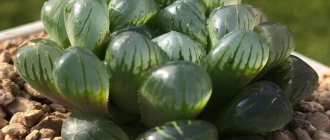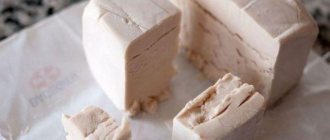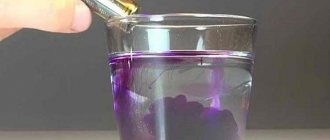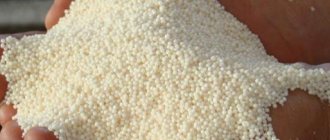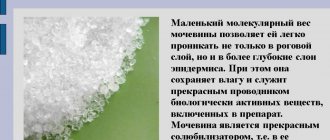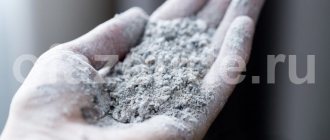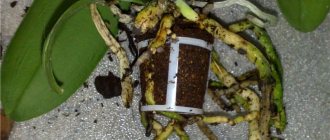Whey is the cloudy yellowish liquid that remains after milk has curdled. It is filled with protein, vitamins, minerals and enzymes. Of course, whey is useful in hundreds of ways, but in this article we will outline its role in gardening.
- How to make whey for the garden
- What serum can be used in the garden
- 1 Serum to change soil acidity
- 2 Whey as fertilizer
- 3 Serum against powdery mildew
- 4 How whey will help grapes
- 5 Serum for weed control
What serum can be used in the garden
First, let us remind you that you need to use unsalted whey in the garden, because salt is harmful to plants.
There are two types of serum that you will encounter:
1. Acid whey - whey obtained from the preparation of cheese or cottage cheese, to which an acid (for example, vinegar or lemon juice) has been added to facilitate the curdling process. Acid whey has less protein and fewer vitamins and minerals, but can still be used in the garden. Acid whey has a pH less than or equal to 5.1. Another difference is that acid whey contains slightly more vitamins and minerals than sweet whey.
2. Sweet whey is the whey produced by making cheese that is curdled with rennet instead of additional acid. Sweet whey has a pH greater than or equal to 5.6.
Many articles mistakenly recommend using only sweet whey and not sour whey in gardening. This is based on the idea that you can go out and spill a pot of undiluted acid whey on your tomatoes without paying attention to the acidity level of the soil, and it will burn the plants.
Both types of whey can be harmful to the environment when large amounts are discharged into waterways because the change in water pH will affect fish and other waterbody life.
And now in more detail about 5 useful areas of application of serum
Fertilizer whey
How does the serum work?
Only a living, unpasteurized product has beneficial properties. The vitamins and amino acids contained in the whey are valuable to plants. In addition, when sprayed, the fermented milk solution covers the leaves with a thin film, which is an impenetrable barrier to fungi and viruses, and crop-damaging insects die because they cannot digest the lactose contained in the whey.
What crops are fertilized with whey?
Most often, whey is used to feed tomato and cucumber beds. Along with these crops, melons, root crops and onions accept fertilizer well. From fruit trees, the serum is useful for apple trees, and from garden flowers - roses and peonies. The serum solution is effective against the pathogens of fusarium, late blight and powdery mildew. It also helps to cope with leaf spot.
From what diseases and for what plants
The whey contains lactic acid bacteria and lactic acid, which have an inhibitory effect on fungi and many insect pests. It can be used both in the garden and in the garden.
Most garden plants respond positively to treatment with fermented milk products: tomatoes, cucumbers, zucchini, squash, onions, strawberries and wild strawberries.
- It is recommended to spray tomatoes frequently, after each rain. This will help avoid late blight and fusarium.
- Cucumbers are processed no earlier than 10 days after planting the seedlings in a permanent place. The serum helps to cope with powdery mildew; for better results, add up to 1-2 drops of iodine solution for each liter of solution.
- The solution will help protect strawberries and strawberries from late blight and various spots.
- A fermented milk solution will help repel onion flies from planting onions. To enhance the effect, you can add tobacco dust to the working solution.
Not all plants respond positively to such treatment. Peppers and eggplants don't like it.
There are also uses for whey in the garden. Lactic acid suppresses the development of powdery mildew, scab, and rust in shrubs and fruit trees. In addition, it successfully copes with the dominance of aphids and leaf rollers.
Interaction with other fertilizers
Whey as a fertilizer interacts well with mineral complex mixtures, as well as organic substances - ash, green infusion of green manure, a complex of microelements, compost or humus.
When mineral components are added to the soil, bacteria help convert them into a form convenient for absorption, passing them through their digestive tract. The result is chelated forms of micro and macroelements.
When adding whey to feed plants in an infusion of green manure, fermentation occurs faster, and nutrients enter the soil in a semi-decomposed form.
The use of whey in the garden as a means of restoring microflora leads to the proliferation of bacteria and the rapid decomposition of plant residues. This in turn leads to an increase in the amount of humic acids - the main factor of fertility.
Disease Prevention
Whey not only fertilizes the soil, but also helps destroy dangerous pathogens that cause diseases.
Experienced gardeners use it against the following diseases:
- late blight;
- powdery mildew;
- rust;
- fusarium;
- scab;
- leaf spotting.
Preventive treatments are carried out 2-3 times a month. Before the procedure, remove dry leaves and rotten stems. For spraying, use a solution of serum diluted with water in a ratio of 1:3.
Fermented milk product for gardening
To obtain a rich harvest in the fall, it is necessary to take proper care of the crops in a timely manner. One of the most important factors is high-quality fertilizers. And every summer resident knows that for this it is not necessary to go to specialized stores, because you can create high-quality fertilizer with your own hands, especially since you can use a wide variety of products for this. And among the most useful products for plants is whey.
Fermented milk product
How do vegetable crops react to dairy products?
Whey is used to feed cucumbers and tomatoes, but melons and melons also love it. Watering can be carried out only in the summer, when the plants begin to get sick en masse, but this must be done regularly, since the film that forms on the leaves quickly collapses. Events are held once every 7–10 days.
Before feeding the tomatoes with iodine serum, you need to find out if it is going to rain, as it will wash away the active substances and the spraying will have to be repeated. It is best to fertilize in the evening so that the film dries and retains its protective properties for several days.
Did you like the article? Share with your friends:
Hello, dear readers! I am the creator of the Fertilizers.NET project. I am glad to see each of you on its pages. I hope the information from the article was useful. Always open to communication - comments, suggestions, what else you want to see on the site, and even criticism, you can write to me on VKontakte, Instagram or Facebook (round icons below). Peace and happiness to everyone!
